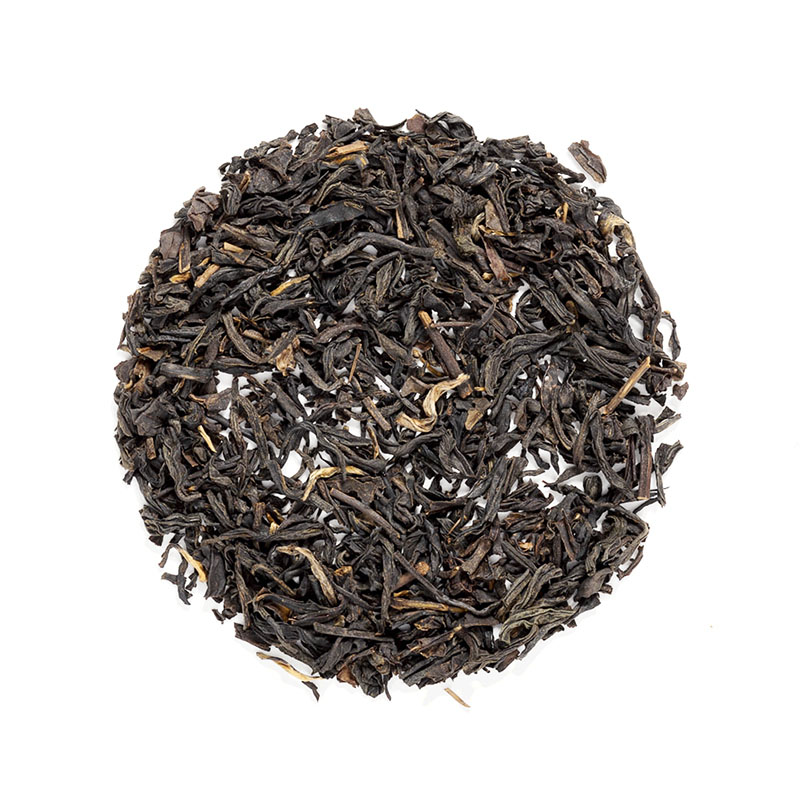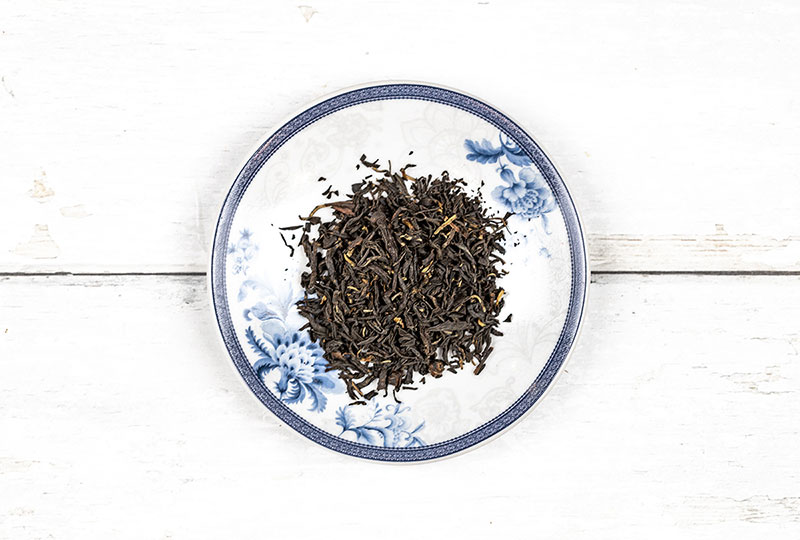Lapsang Souchong Tea Guide
This post may contain affiliate links. Simple Loose Leaf is a participant in the Amazon Associates Program, an affiliate advertising program designed to provide a means for sites to earn advertising fees by linking to Amazon.com. There’s no tea like Lapsang Souchong. This tea is so unique that even tea amateurs are likely to recognize it at the first sip. However, Lapsang Souchong is much more than just a smoky tea. Find out more about this delicious black tea.
What is Lapsang Souchong?
Lapsang Souchong or Zhengshan Xiaozhong is a Chinese black tea with a smoky flavor. The literal translation of its name would be–Small Leaf Type from the Original Mountain. Remember Wuyi rock tea? This tea also comes from the Wuyi Mountains as these popular oolong teas. Lapsang souchong is made from the same plant as all other real teas–Camellia sinensis. Even though for a passionate tea drinker every high quality tea will be unique, lapsang souchong may be one of the most unique of all unusual teas. Lapsang souchong is smoked over pinewood, which results in a very strong smoky note. Today, other types of wood may be used too. However, not all lapsang souchong teas undergo intense smoking. Unsmoked types have sweet, ripe fruit and cocoa notes and are very different from what we usually call a lapsang souchong. Lapsang souchong or Zhengshan Xiaozhong was born in Tongmu village in Fujian. This place is a hometown of one more exquisite Chinese black tea–Jin Jun Mei. In fact, Jin Jun Mei and unsmoked high quality zhengshan xiaozhong may have a very similar flavor profile. While lapsang souchong has a very long history, Jin Jun Mei was created only recently. Lapsang souchong is the first black tea in the world.How is lapsang souchong made
While many lapsang souchong teas may be made from older and more mature leaves, this isn’t necessarily always the case. Souchong in the name of this tea is a different souchong than the one used for grading teas in India and Sri Lanka. In Lapsang souchong, souchong means small leaf tea plant. The processing includes withering in bamboo basket above pine wood fires, and further drying over smoky pine fires ones the leaves are oxidized and rolled. Processing method includes one more interesting step - pan-frying, a common step in making Chinese green teas. Today, smoked lapsang souchong is so popular that it’s available in all forms, flavors, styles and shapes. It’s been available and popular outside of China for about 200 years. You can find it in tea bags, or in loose leaf form, in specialized shops or in supermarkets. It’s one of the ingredients in a popular classic blend Russian Caravan.
Russian Caravan black tea blend
Flavor Profile
Today, lapsang souchong usually has a very prominent smoky note. Traditionally, the smoky note comes from smoking the leaves over pine wood to achieve a well-balanced flavor with recognizable smokiness, with underlying deep fruity and other notes too. Today, many lapsang souchong teas have a very intense smoky flavor and scent, often compared to the scent of smoked meat or campfire. They are less fruity and stronger. Sometimes, lower-quality tea is not traditionally smoked, but artificially smoked and flavored instead. Although lapsang souchong originates in China, other countries have adopted the method of making smoked tea as well. There are many amazing examples of smoked teas from Japan, India and Sri Lanka, all with a special character and delicious flavor smoked over different types of wood. In blends, lapsang souchong usually gives a fine, often subtle smoky note without dominating the whole blend. Lapsang souchong is delicious both hot and cold and you can use it for making lattes or even for baking too.Caffeine Content
Lapsang souchong is a black tea, therefore, it will usually have more caffeine than green tea. However, one study showed that lapsang souchong may have less caffeine than many green teas[1]. As caffeine content will depend on many factors – from tea cultivar to growing conditions, harvesting methods and processing, and even storing and brewing, it’s impossible to say how much caffeine will each cup of lapsang souchong have. It is likely it will have less caffeine than Assam tea or Gyokuro green tea, but more caffeine than bancha tea or many roasted oolongs. If you want to lower the caffeine content, use less leaves and use shorter steeping time.
Unsmoked zhengshan xiaozhong tea leaves
Benefits of Drinking Lapsang Souchong
Lapsang souchong is a black tea, so it will share the same health benefits of other black teas. However, study showed that it may have a slightly lower total phenolic content than other black teas[2]. The most important benefits are:1. Antioxidant activity
Lapsang souchong contains antioxidants, thearubigins and theaflavins that may provide high antioxidant activity[3]. They may help fight free radicals, reduce oxidative stress, and protect the cells from damage[4].2. Boosting energy
Black tea contains caffeine that may help boost energy. Tea has less caffeine than coffee and may be more suitable for afternoon energy boost. To increase the caffeine content, add more tea leaves and increase the steeping time.3. Aiding weight loss
Studies showed that drinking black tea daily may help both to prevent gaining weight[5] and help lose weight[6].4. Protecting the heart
Studies showed that drinking black tea may help reduce the risk of heart disease[7] including heart attacks and regulate blood pressure[8].How to brew lapsang souchong
You can brew lapsang souchong tea in different ways. For a western style brewing, you will need about 2 grams of tea per cup of water. Bring water to a boil and let it cool down for a few seconds. Steep the tea for 2 minutes and strain. You can re-steep the same leaves once or twice. This method is great for smoked lapsang souchong. If you are brewing unsmoked lapsang souchong or high quality smoked lapsang souchong, eastern-style brewing may show you all the beauty and complexity of this tea. Use about 5-6 grams of tea leaves per 150 ml of water. Bring fresh spring water to a boil and let it cool down for a minute or two. Steep the tea leaves for 30 seconds. Re-steep at least 5 times, each time increasing the steeping time. Read about other unique Chinese tea – Keemun.Disclaimer: This article is for informational purposes only. It’s not intended to replace medical advice, diagnosis or treatment. Every person is different and may react to different herbs and teas differently. Never use teas or herbs to treat serious medical conditions on your own. Always seek professional medical advice before choosing home remedies.
References:
[1] https://www.teaguardian.com/tea-health/caffeine-content-39-tea-samples/ [2] https://www.mdpi.com/2076-3921/8/7/215/htm [3] https://www.researchgate.net/publication/267036265_Thearubigins_rich_black_tea_fraction_reveals_strong_antioxidant_activity [4] https://www.nature.com/articles/1602489 [5] https://www.ncbi.nlm.nih.gov/pmc/articles/PMC6273558/ [6] https://www.ncbi.nlm.nih.gov/pmc/articles/PMC6512146/ [7] https://www.ncbi.nlm.nih.gov/pubmed/16855537 [8] https://www.ncbi.nlm.nih.gov/pmc/articles/PMC4661527/
More from:
SLL




Leave a comment